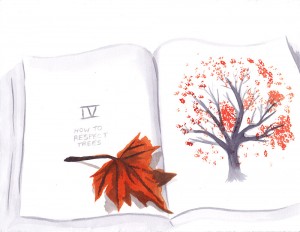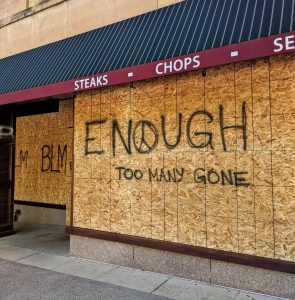Imagine a park with no benches or playgrounds. A sports team with no mascot. A city with no landmarks. A nation with no flag. A currency with no image. No music. No movies. No concerts. If you can’t imagine this picture-less, expressionless world, then you believe the arts are worthwhile.
Yet Wisconsin ranks 48th in the nation for arts funding. The current state arts budget is $811,000, which breaks down to 13 cents per capita. That’s 1/50th as much as Minnesota and less than 1/1000th of what Germany spends per capita on arts and culture. The US as a whole lags far behind the rest of the developed world in spending on arts and culture.
Now, there are naysayers who will claim that we shouldn’t fund the arts with taxpayer money, on both ends of the political spectrum. But with that claim, they ignore all the examples of government support for businesses, like the big bank bailouts of 2008, or how the two largest users of food stamps are farmers and Wal-Mart employees. So whether we should or shouldn’t publicly support the arts has little to do with whether it’s right or justifiable, and everything to do with our vision for the future.
We are at a pivotal time culturally and economically. Across the US, we are caught between two mindsets. Will we double down on an old mindset that calls for more jobs dependent on behemoth companies? Will we embrace a new mindset that prizes entrepreneurism and technology?
What if there was a third option? What if the future was a creative and generative economy, championed by artists, makers, cultivators, and creators? If we believed in this future, how could we make it possible?
The FoxConn deal in Wisconsin will cost $4 billion in taxpayer money and at most will create 13,000 jobs, each subsidized by $350,000. For comparison, the average small business takes about $30,000 of startup capital. With that same $4 billion from the FoxConn deal, Wisconsin could give $40,000 business grants to 100,000 existing and aspiring small business owners, many of whom would become the next generation of job creators.
If just one percent of these business grants went to artists, it would be an unprecedented investment of $40 million in 1,000 artists’ careers. If 10 percent went to the arts-focused, that would be $400 million for 10,000 creative entrepreneurs. At any percentage, we would be setting a precedent by investing in the arts at the same level as for-profit businesses in every other industry.
But we don’t have to wait for policy change to achieve this hypothetical future. Both the public and private sectors hold the powers of leadership and influence, and we already have multimillion and billion dollar companies in Wisconsin who could take this charge.
Let this be the call to the leaders in our community and creative people with high expectations. Imagine custom-designed playgrounds that look like no other on Earth. A landmark at every gathering spot and neighborhood entrance. A theatre in every school. Vibrant studios full of dreamers, doers, and critical thinkers. Imagine, who are we in the next ten years, and who will become in the next 100? And beyond?
An abridged version of this article was first published as a part of the Cap Times Bright Ideas 2019 series. Cap Times reporters asked several Madisonians to share their Bright Ideas for the new year. Visit Cap Times to read the week-long series.
This is also a part of the Jenie Gao Studio series, Rethinking the Arts.




